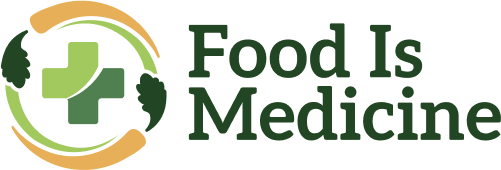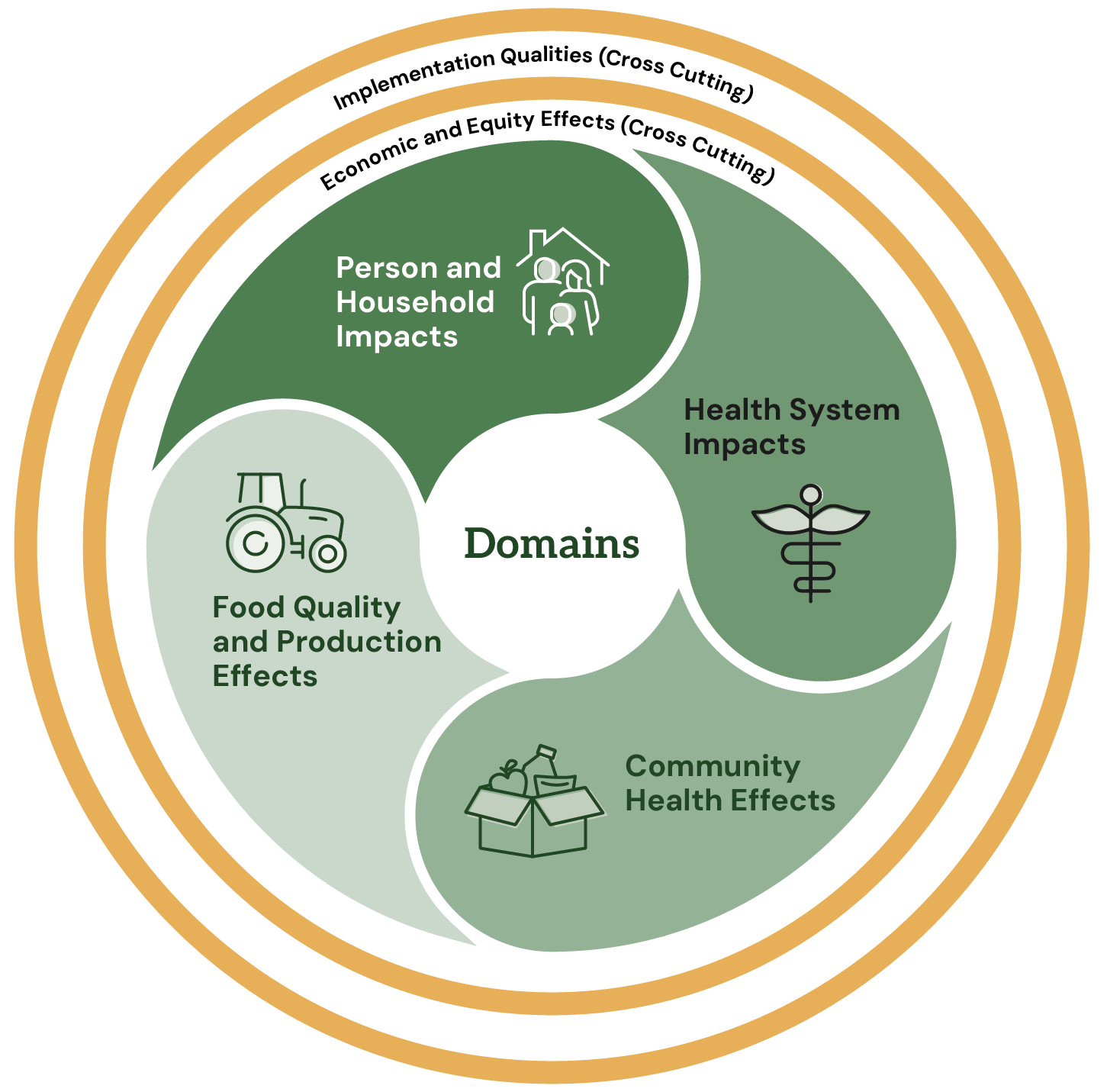Analytic Framework: Measurement Domains
The framework identifies analytic domains identified as having potential impact resulting from Food Is Medicine (FIM) interventions.
The domains were selected based on the existing literature, research, and practitioner expertise, and the existence of available measures.
The four domains represent distinct areas that FIM approaches could positively impact. Each domain is distinct but has an interrelationship with the other domains. Specific indicators can be measured to demonstrate impact within each domain.
The framework includes two cross-cutting groups of relevant measures across all four domains:
- Economic and equity effects
- Program implementation qualities or characteristics
The four analytic domains and the anticipated success of FIM interventions that could be measured within each domain are described below.
Person and Household Impacts
This measurement assesses individual patient/participant and household spillover effects resulting from Food Is Medicine interventions. Patient and participant indicators should be assessed consistently across all types of Food Is Medicine interventions, as appropriate for the setting, level of patient engagement, and burden reduction
What success looks like:
- Increased participation in Food Is Medicine interventions
- Improved access to healthy foods, aligned to diet-related health state needs
- Improved person-centered health outcomes
Health System Impacts
This measurement demonstrates how the complement of institutions, organizations, and resources collaborate to promote, sustain, or restore health.
The health system impact domain focuses on measuring aspects of the system — capabilities, actions, resources — that enable the provision of Food Is Medicine services.
What success looks like:
- Increased availability of high-quality FIM interventions
- Increased health system performance
- Increased integration of health care system and community-based organizations
Community Health and Food Access Effects
This measurement considers key aspects of community systems and their ability to support overall health through Food Is Medicine approaches. Assessment of impacts of programs for community members can use nonclinical indicators or health improvement, disease prevention, health disparity reduction, and resource access. Communities often overlap and can be understood as connected by geography, cultural relationships, and other relational qualities
What success looks like:
- Increased access to healthy food within communities
- Increased access to community-valued nutrition interventions
- Increased community economic benefit
Food Production and Sourcing Effect
This measurement considers the relationship of Food Is Medicine to agriculture production, the environment, and the financial health of local/regional producers. (These are noncore requirements but are connected systems and indicators and can have spillover and amplifying effects with the health system.)
What success looks like:
- Increased sourcing of regional food for Food Is Medicine
- Strengthened local food economy
- Increased support for regional food producers
- Local food systems transformation and expansion

